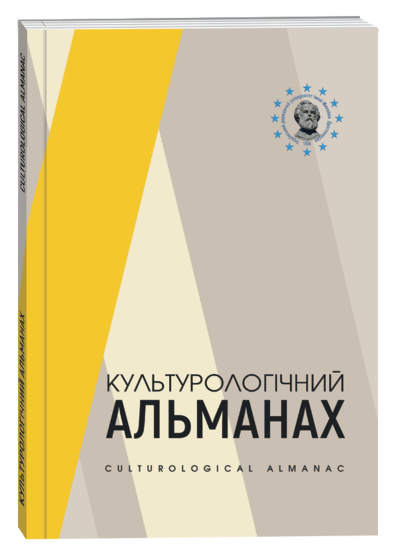BISHOP OF NIZHYNSK MYKOLA SEMENOVYCH SHYRAI (1870–1938)
DOI:
https://doi.org/10.31392/cult.alm.2022.3.14Keywords:
bishop, life path, criminal investigation case, Ukrainian Autocephalous Orthodox Church, Active Christ ChurchAbstract
The article covers the life path of Mykola Semenovich Shirai (1870–1938). Special attention is paid to his fate after 1933, precisely this year in historiography is the last in the bishop’s life. His further fate after 1933 was not studied. The novelty of what we are doing is that we highlighted the facts from the life of M. S. Shiray after 1933, thanks to the analysis of the criminal case of 1938. The article presents for the first time materials on the biography of the bishop from the State Archives of the Chernihiv Region, the Branch State Archives of the Security Service of Ukraine and the Central State Archive of the highest bodies of government and administration of Ukraine in the city of Kyiv. To achieve the goal and objectives of the research, general scientific and special research methods (heuristic, historical-retrospective, biographical) were applied. To fully disclose the topic, we used sources of personal origin, memories, letters, notes of people who knew or met personally with M. S. Shiray. The article also includes the personal memories of M. S. Shirai’s wife about him. Based on the data collected by us, the biographical data of the bishop from 1870 to 1938, his family status, and his participation in the history of the Ukrainian Autocephalous Orthodox Church were determined. The activities of the bishop in the Active Christ Church are characterized and the chronological limits of his affiliation to this church are determined. We also discovered and recorded that he was one of the supporters of the Synod Church. His activities in the Synodal Church were analyzed, namely: appeals for admission and agitation. We recorded the last date from the bishop’s life, namely 1938. The article reflects his act of execution, which is published for the first time. In our conclusions, we assume that M. S. Shirai was an agent of the DPU, and later of the NKVD. In addition, we determined his citizenship by reference to his statements in the criminal case. With the help of handwriting analysis, the bishop’s signature on each page of the protocols was compared. According to our observations, no physical or psychological pressure was applied to him. We assume that M. S. Shirai’s sentence to be shot is connected with his membership in the Ukrainian Autocephalous Orthodox Church.
References
Власовський І.Ф. (1966). Нарис історії Української православної церкви: у 4 т. Нью-Йорк : БАВНД БРУК, т. 4. 416 с.
Галузевий державний архів Служби безпеки України. Ф. 13. Спр. 445. Арк. 29.
Галузевий державний архів Служби безпеки України. Ф. 6. Оп. 8. Спр. 14. Арк. 206.
Горбунова Г. (2011). Постать протодиякона Василя Потієнка в історії Української Автокефальної Православної церкви (за документами ЦДАЗУ). Сіверянський літопис. № 5. С. 72–80.
Державний архів Чернігівської області. Ф. Р.-8840. Оп. 3. Спр. 10543. 39 арк.
Державний архів Чернігівської області в м. Ніжин. Ф. Р.-61. Оп. 1. Спр. 1336. Арк. 5.
Клос В.В. (2010). Розділяй і володарюй, або ДХЦ в політиці ДПУ (1924–1927). Труди Київської Духовної Академії. № 4. С. 273–285.
Маєвський П. (1980). Митрополит Василь Липківський. Листи 1933–1937. Лос-Анджелес: Українське Православне Братство ім. Митр. Василя Липківського. 176 с.
Центральний державний архів вищих органів влади та управління України в м. Києві. Ф. 4215. Оп. 1. Спр. 8. Арк. 7.
Явдась М.І. (1956). Українська Автокефальна Православна Церква. 1921–1936. Мюнхен-Інгольштадт : Д-ра Петра Белея. 228 с.








